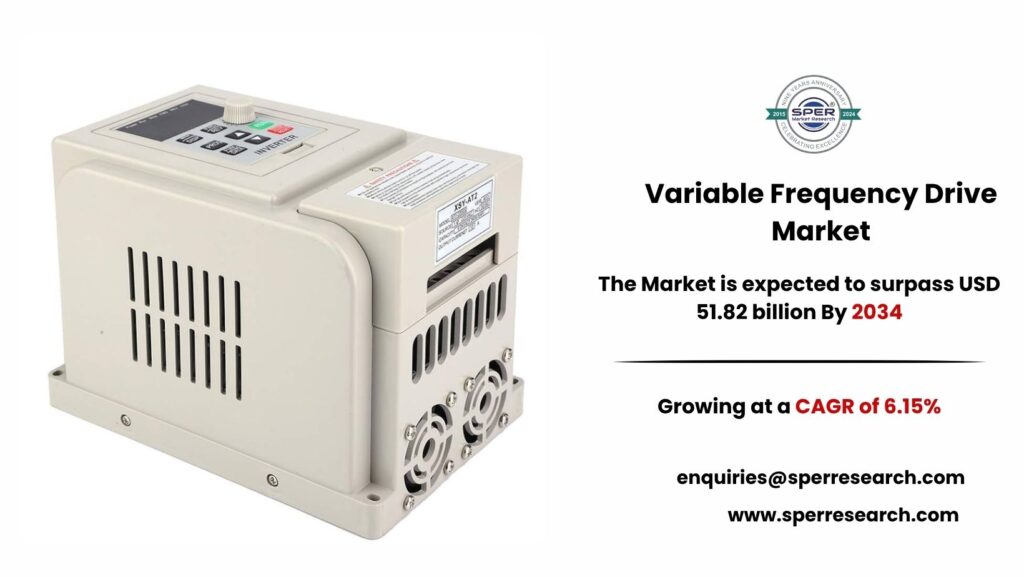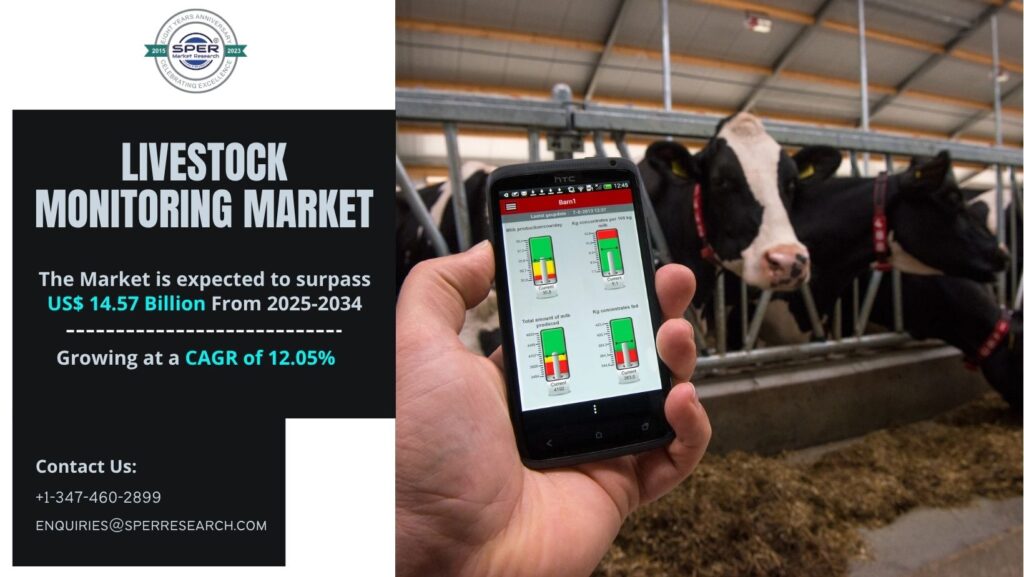A Variable Frequency Drive (VFD) is an electronic device that regulates the speed and torque of an AC motor by altering the frequency and voltage of the power supplied to the motor. This modification allows the motor to operate at optimal efficiency tailored to the specified load, thus reducing energy consumption and expenses. VFDs are utilized in a variety of industrial and commercial applications, including HVAC systems, pumps, conveyor belts, and manufacturing equipment. They provide benefits such as improved process control, reduced wear on machinery, and extended motor lifespan. Additionally, VFDs offer critical data regarding motor performance and energy usage, facilitating the optimization of processes and energy management.
According to SPER market research, ‘Global Variable Frequency Drive Market Size- By Product Type, By Power Range, By Application, By End-User – Regional Outlook, Competitive Strategies and Segment Forecast to 2034’ state that the Global Variable Frequency Drive Market is predicted to reach 51.82 billion by 2034 with a CAGR of 6.15%.
Drivers:
The market’s growth is propelled by regulatory requirements across various sectors, advocating for energy efficiency and environmental sustainability. Such regulations have resulted in a heightened adoption of VFDs to optimize energy consumption and curtail energy waste. Technological advancements pertaining to VFDs, including enhanced efficiency, reduced size, and increased power ratings, significantly augment their attractiveness to industries aiming to lower operational costs and enhance performance. Furthermore, the growing investment in infrastructure development is creating substantial demand for heating, ventilation, and air conditioning (HVAC) systems, necessitating solutions that improve energy output for infrastructure; this factor is anticipated to positively influence market expansion.
Download Free Sample Detailed Report – https://www.sperresearch.com/report-store/variable-frequency-drive-market?sample=1
Restraints:
Variable frequency drive (VFD) market expansion may be hampered by a number of factors. A primary hurdle is the steep initial investment required for VFDs in comparison to conventional motor control techniques. Additionally, the intricate nature of VFDs can complicate installation and maintenance, necessitating specialized expertise and knowledge. The lack of awareness and education among end-users regarding the advantages and application of VFDs might also restrict market growth. Moreover, concerns regarding the reliability and durability of VFDs, alongside the presence of cost-effective alternatives, could hinder their acceptance in specific markets.
In 2024, the North American variable frequency drive market captured a considerable share. The growth of this market is fueled by significant investments in smart grids and smart meters, as well as a rising awareness of greenhouse gas emissions. The implementation of smart grid technology in the region is expected to facilitate a more efficient utilization of electricity infrastructure, improve the flexibility and resilience of energy systems, and hasten the integration of renewable energy sources. Some of the key market players are ABB, Eaton, General Electric, Hitachi Ltd, Rockwell Automation Inc, Schneider Electric, and others.
For More Information, refer to below link: –
Variable Frequency Drive Market Outlook
Related Reports:
Follow Us –
LinkedIn | Instagram | Facebook | Twitter
Contact Us:
Sara Lopes, Business Consultant — USA
SPER Market Research
enquiries@sperresearch.com
+1–347–460–2899









